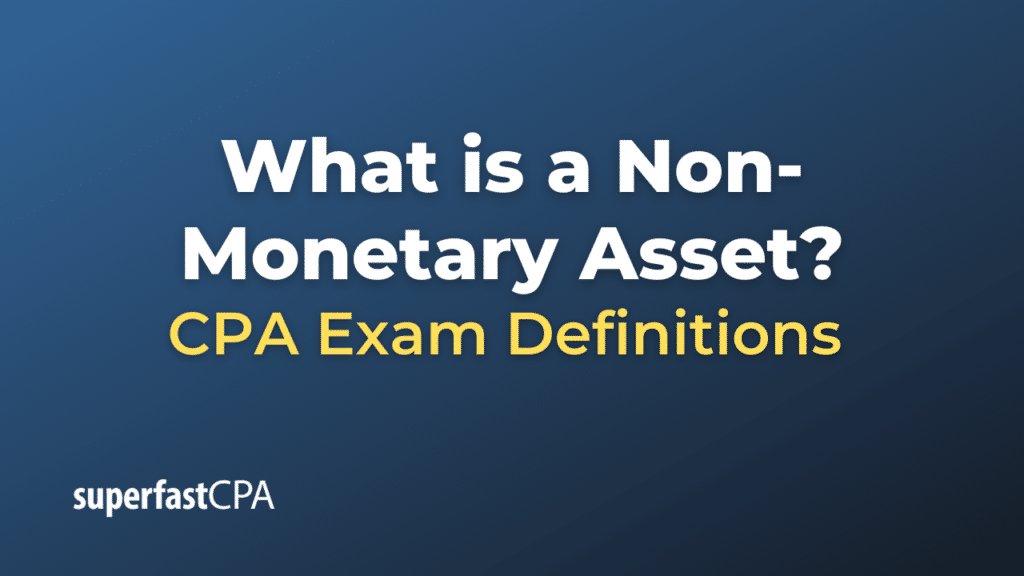Non-Monetary Asset
A non-monetary asset is an asset that is not able to be quickly and easily converted into cash, and its value is not stated in a fixed monetary value. Non-monetary assets can be physical or intangible.
Physical non-monetary assets include fixed assets like buildings, machinery, equipment, land, and inventory. These are assets that a company uses in its daily operations to generate income but are not intended to be converted into cash in the short term.
Intangible non-monetary assets include patents, copyrights, trademarks, brand names, and goodwill. These assets are not physical in nature but can contribute significantly to a company’s long-term value and competitive position.
The value of non-monetary assets is often subject to a degree of estimation and can fluctuate over time due to factors such as depreciation, obsolescence, or changes in market demand. For example, the value of a piece of machinery depreciates over time as it gets used, and the value of a patent might decrease as it nears its expiration date or if the market for the patented product shrinks.
These types of assets are contrasted with monetary assets, which are assets whose value is stated in or convertible into a fixed amount of cash. Examples of monetary assets include cash itself, accounts receivable, and notes receivable.
Example of a Non-Monetary Asset
Let’s take an example of a fictional publishing company, “Readers’ Paradise,” to illustrate non-monetary assets.
- Physical Non-Monetary Assets:
- Buildings: Readers’ Paradise owns an office building from where it operates. This building is a non-monetary asset. It’s used for the company’s operations, it’s not held for the purpose of conversion into cash, and its value can’t be expressed in a fixed monetary amount.
- Equipment: The company also owns printing presses and computers. These are also physical non-monetary assets. They are used in the daily operations of the business, and they’re not meant to be converted into cash in the short term.
- Inventory: The books that Readers’ Paradise has published and keeps in stock to sell are part of its inventory. This inventory is another example of a physical non-monetary asset. It’s expected to be sold (and thus converted into cash), but it’s not a fixed cash amount, and its value might fluctuate (for instance, if some books become less popular over time).
- Intangible Non-Monetary Assets:
- Copyrights: Since Readers’ Paradise is a publishing company, it holds copyrights to several books. These copyrights are intangible non-monetary assets. They provide the company with the exclusive legal right to publish and sell these books, adding value to the business.
- Brand Name: The brand name “Readers’ Paradise” itself is an intangible non-monetary asset. The company has built a reputation in the publishing world, and its brand name is recognizable to its customers. This brand recognition adds value to the company, even though it’s not something that can be easily converted to a fixed cash amount.
These examples illustrate non-monetary assets, which are crucial for the company’s operations and long-term value, even though they’re not easily converted into a set amount of cash.













